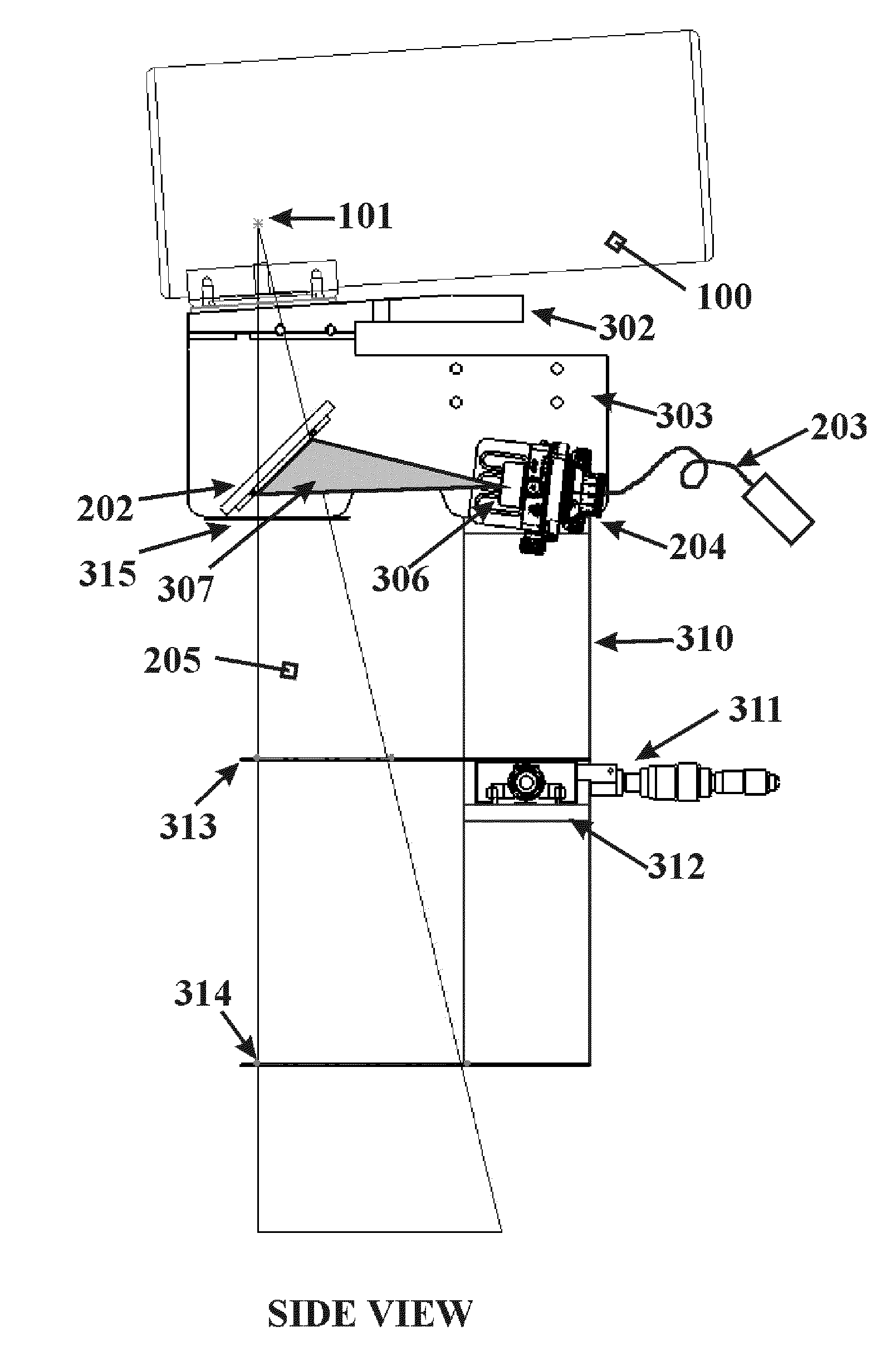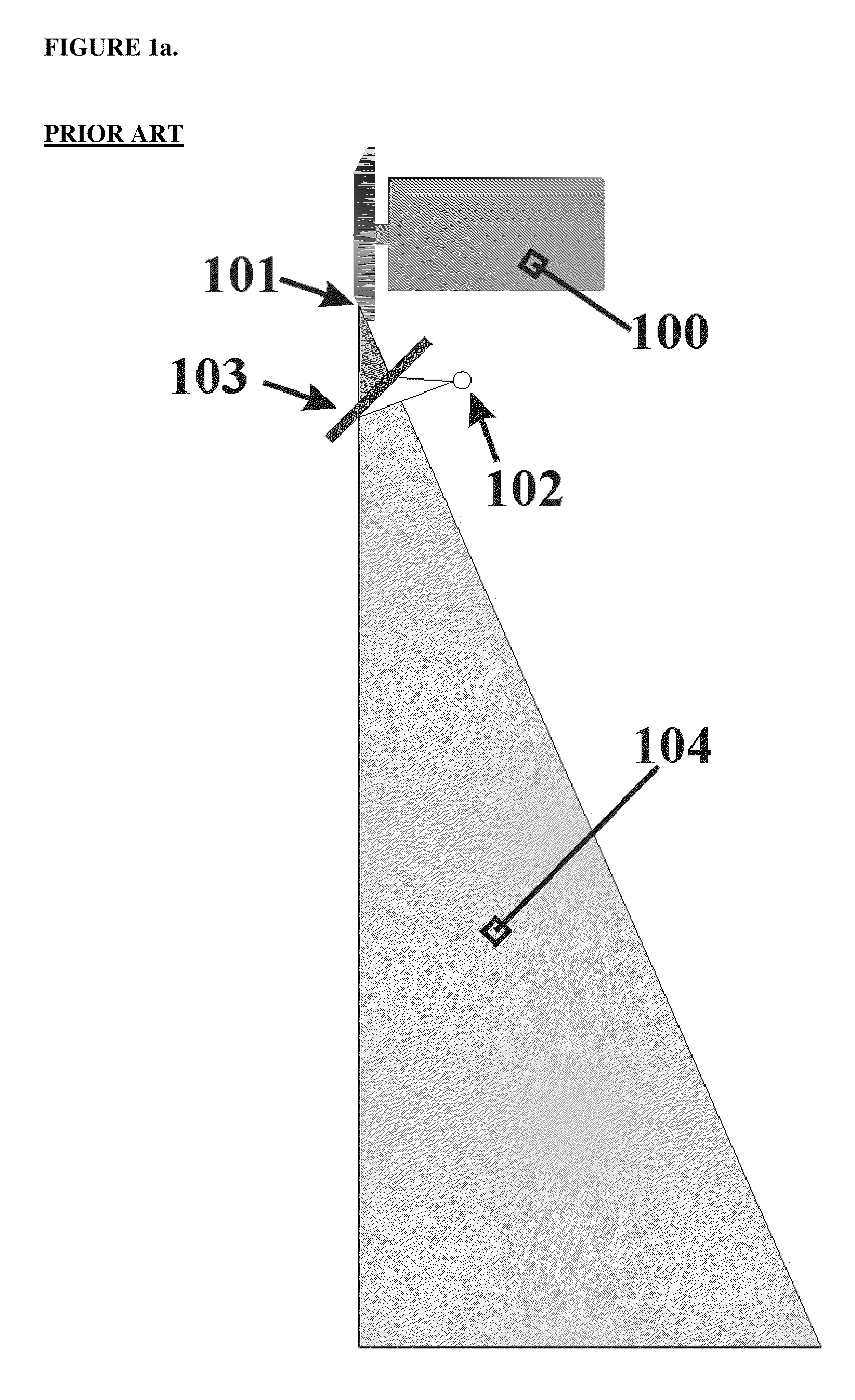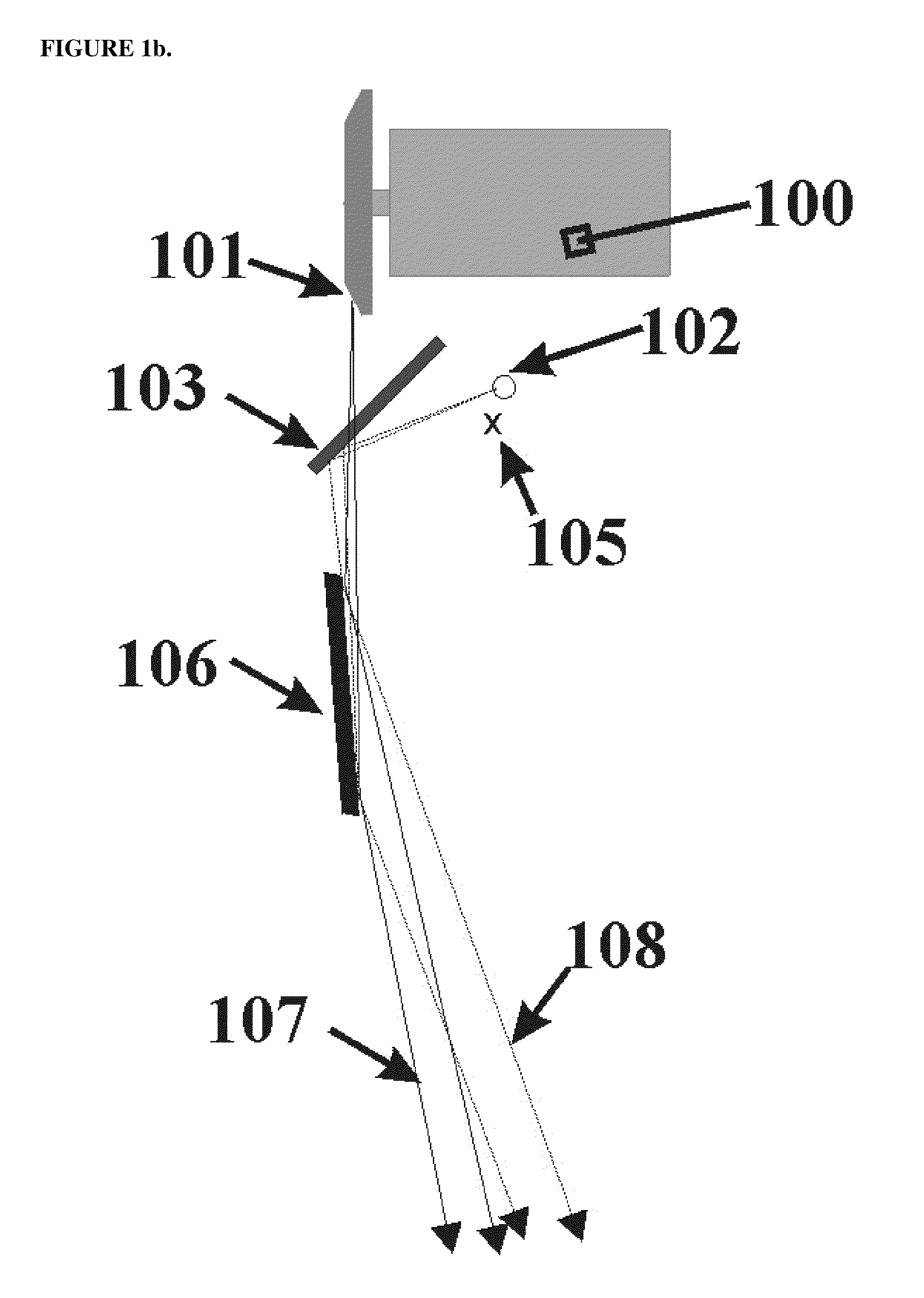Optical alignment system and alignment method for radiographic X-ray imaging
a radiographic x-ray and optical alignment technology, applied in the field of imaging systems, can solve the problems of insufficient adjustment, difficult or impossible to use the visible beam to align the x-ray mirror, and single mirror will only yield a thin fan-beam of mono-energetic x-ray light, etc., to eliminate discrepancies and eliminate discrepancies
- Summary
- Abstract
- Description
- Claims
- Application Information
AI Technical Summary
Benefits of technology
Problems solved by technology
Method used
Image
Examples
Embodiment Construction
[0025]A conventional visible-light alignment system (FIG. 1a) commonly used in radiographic X-ray imaging systems includes an incandescent light bulb (102) and a 45-degree mirror (103) mounted in a fixed position relative to a point-source X-ray tube (100). The light bulb (102) is positioned at a virtual focal spot defined by the actual X-ray focal spot (101) and the angle and location of the 45-degree mirror relative to the X-ray spot. The visible-light cone beam overlaps with the X-ray cone beam (104), thereby providing a method for visual observation of the X-ray field at the object and / or image plane.
[0026]A radiographic X-ray imaging system incorporating a single multilayer X-ray mirror for beam filtration is shown in FIG. 1b. The X-ray mirror (106) must be precisely positioned in the X-ray beam. A virtual focal spot (105) is determined by the position and angle of the 45-degree mirror (103) relative to the X-ray spot. When the light source (102) used in the visible alignment s...
PUM
 Login to View More
Login to View More Abstract
Description
Claims
Application Information
 Login to View More
Login to View More - R&D
- Intellectual Property
- Life Sciences
- Materials
- Tech Scout
- Unparalleled Data Quality
- Higher Quality Content
- 60% Fewer Hallucinations
Browse by: Latest US Patents, China's latest patents, Technical Efficacy Thesaurus, Application Domain, Technology Topic, Popular Technical Reports.
© 2025 PatSnap. All rights reserved.Legal|Privacy policy|Modern Slavery Act Transparency Statement|Sitemap|About US| Contact US: help@patsnap.com



